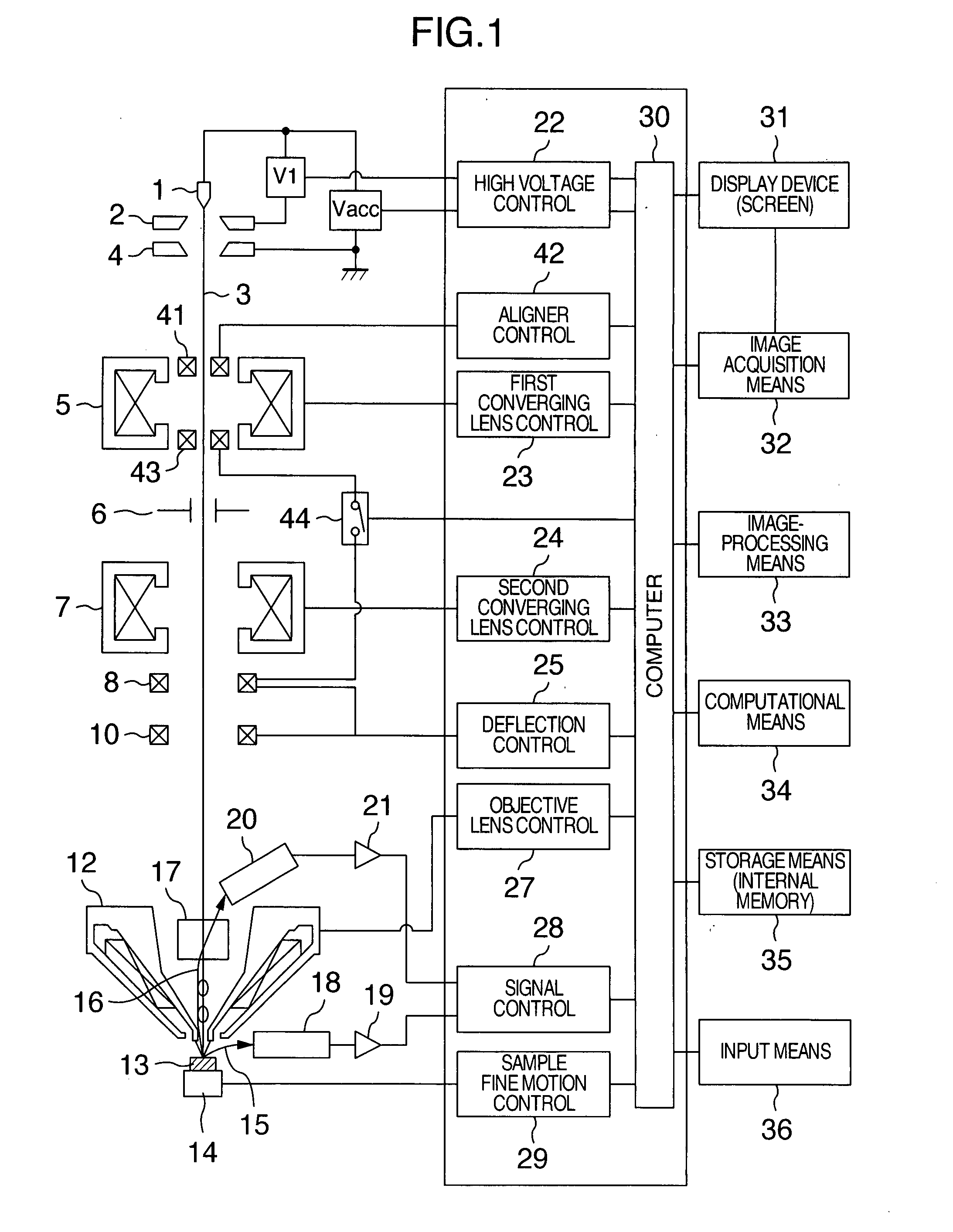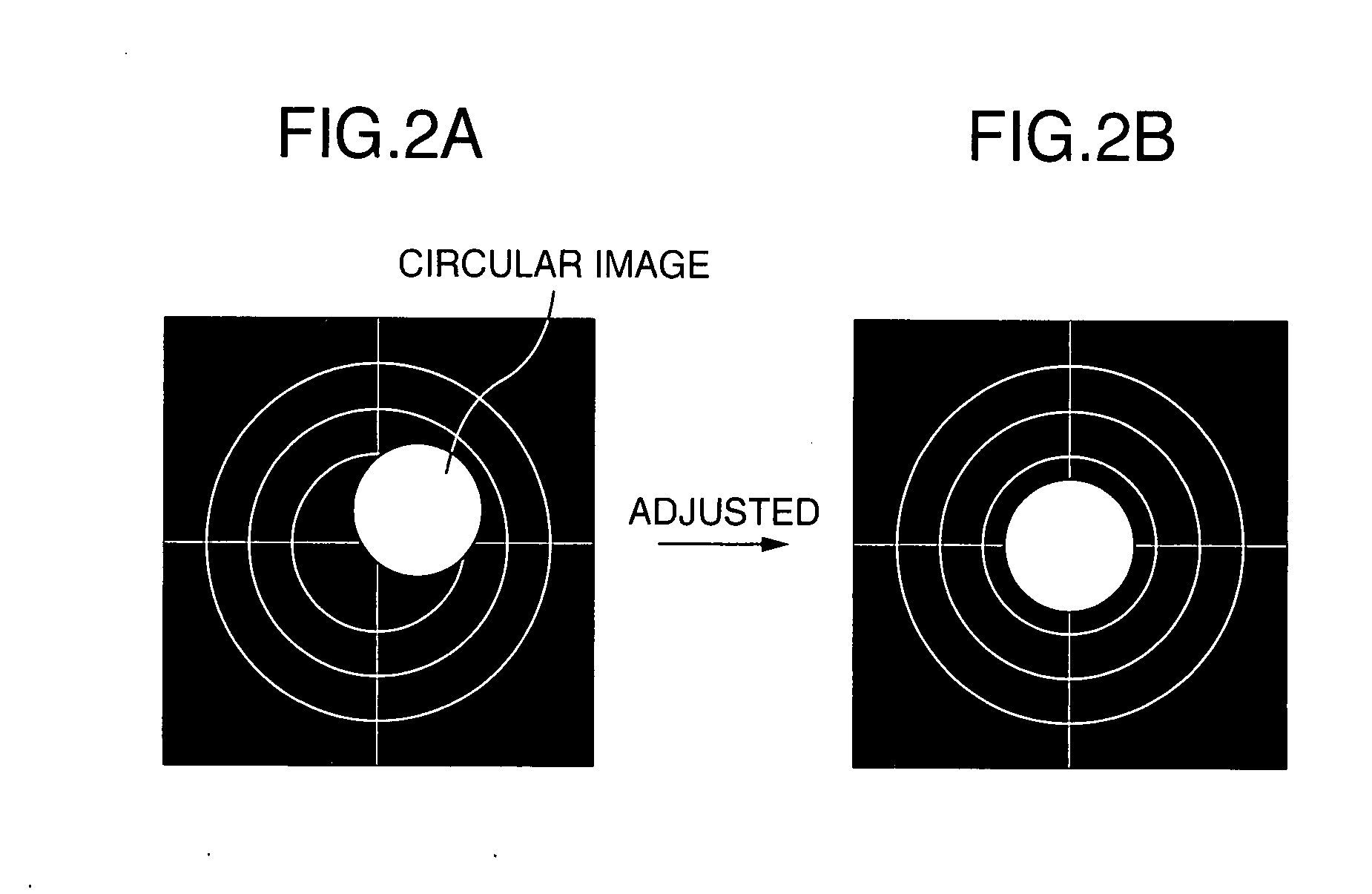Charged particle beam apparatus and method for charged particle beam adjustment
- Summary
- Abstract
- Description
- Claims
- Application Information
AI Technical Summary
Benefits of technology
Problems solved by technology
Method used
Image
Examples
embodiment 1
[0036] Measurement of the sensitivity of an aligner performed in the processing step (1) and detection of the deviation between the center of the primary charged particle beam and the center of the objective aperture are described, the detection being performed in the processing step (2).
[0037] The aligner can align the primary charged particle beam normally in X-, and Y-directions (in two dimensions). The initial condition of the aligner is given by (X0, Y0). The amount of correction of the aligner is given by X1, Y1. Where the center position WALB of a circular image on the image used for adjustment of the beam center axis is represented by complex numbers, the relationship given by the following Eq. (1) is obtained.
WALB=C+D·(X1+j·ε·Y1) (1)
where C is a complex representation of the amount of deviation between the center of the image for adjustment of the beam center axis and the center of the circular image, D is a complex representation of the sensitivity of motion of the ci...
embodiment 2
[0072] The flow of processing of FIG. 10 is described in detail in the following.
[0073] In step 1, the present condition of the objective lens 57 or a condition determined based on the present condition (e.g., a condition slightly shifted in terms of focus from the present focal condition) is set as condition 1 into the objective lens 57. Then, the present condition of the aligner 101 or a previously determined condition is set as condition 1 for the aligner 101. Image 1 is obtained under these objective lens condition 1 and aligner condition 1.
[0074] In step 2, condition 2 of the aligner 101 is obtained as deflection condition for the aligner by deflecting condition 1 by 180° within a plane perpendicular to the optical axis as shown in FIG. 11. This condition 2 is set into the aligner 101. Image 2 is obtained under condition 1 of the objective lens 57.
[0075] In step 3, condition 3 is obtained as deflection condition for the aligner 101 by deflecting condition 1 or 2 of the align...
embodiment 3
[0091] On the other hand, with respect to the astigmatic corrector 102, more accurate automated axial adjustment can be made by the flow of processing as illustrated in FIG. 10 in the present embodiment. The principle on which optimum conditions for astigmatic correction are derived from the obtained parallaxes is described in patent reference 2.
PUM
 Login to View More
Login to View More Abstract
Description
Claims
Application Information
 Login to View More
Login to View More - R&D
- Intellectual Property
- Life Sciences
- Materials
- Tech Scout
- Unparalleled Data Quality
- Higher Quality Content
- 60% Fewer Hallucinations
Browse by: Latest US Patents, China's latest patents, Technical Efficacy Thesaurus, Application Domain, Technology Topic, Popular Technical Reports.
© 2025 PatSnap. All rights reserved.Legal|Privacy policy|Modern Slavery Act Transparency Statement|Sitemap|About US| Contact US: help@patsnap.com



